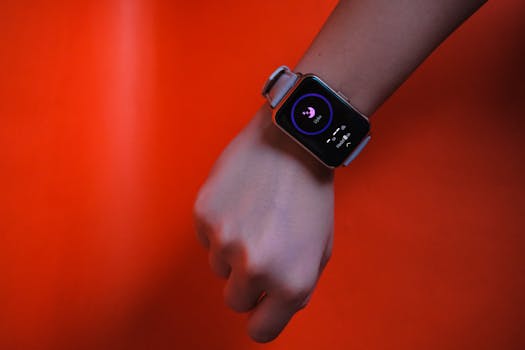
“
Smart Fabrics: The Next Frontier in Wearable Technology for 2026
Smart Fabrics: The Next Frontier in Wearable Technology for 2026 is an innovative technology that is changing the way we interact with our clothing and accessories. With the ability to integrate sensors, electronics, and other technologies into fabrics, smart fabrics are opening up new possibilities for wearable technology.
Introduction to Smart Fabrics

Smart fabrics, also known as intelligent textiles, are fabrics that have been designed to provide additional functionality beyond their traditional use as clothing or upholstery. These fabrics can be equipped with a range of technologies, including sensors, actuators, and energy harvesting devices, which enable them to sense and respond to their environment.
One of the key benefits of smart fabrics is their ability to provide real-time feedback and monitoring. For example, a smart fabric could be used to monitor a person’s vital signs, such as heart rate and blood pressure, and provide alerts if any abnormalities are detected. This could be particularly useful for people with chronic health conditions or for athletes who want to monitor their performance. For more on this, check out our article on Wearable Tech and Mental Health.
Applications of Smart Fabrics

Smart fabrics have a wide range of potential applications, from healthcare and sports to fashion and entertainment. Some examples of smart fabric applications include:
- Health monitoring: Smart fabrics can be used to monitor a person’s vital signs, such as heart rate and blood pressure, and provide alerts if any abnormalities are detected.
- Sportswear: Smart fabrics can be used to create high-performance sportswear that provides real-time feedback and monitoring. For example, a smart fabric could be used to monitor an athlete’s muscle activity and provide alerts if they are at risk of injury.
- Fashion: Smart fabrics can be used to create interactive and dynamic clothing that responds to the wearer’s environment. For example, a smart fabric could be used to create a dress that changes color in response to music or light.
- Entertainment: Smart fabrics can be used to create interactive and immersive entertainment experiences. For example, a smart fabric could be used to create a virtual reality headset that provides a fully immersive experience.
Challenges and Limitations

While smart fabrics have the potential to revolutionize a wide range of industries, there are also several challenges and limitations that need to be addressed. Some of the key challenges and limitations include:
- Cost: Smart fabrics are currently more expensive than traditional fabrics, which can make them less accessible to consumers.
- Comfort: Smart fabrics can be less comfortable than traditional fabrics, particularly if they are equipped with bulky sensors or electronics.
- Durability: Smart fabrics can be less durable than traditional fabrics, particularly if they are exposed to water or harsh chemicals.
- Security: Smart fabrics can pose security risks if they are not designed with security in mind. For example, a smart fabric could be used to steal sensitive information or track a person’s location.
Conclusion

Smart fabrics are an exciting and rapidly evolving field that has the potential to revolutionize a wide range of industries. While there are several challenges and limitations that need to be addressed, the benefits of smart fabrics make them an attractive option for many applications. As the technology continues to evolve and improve, we can expect to see smart fabrics become increasingly integrated into our daily lives. For a look at the broader context of wearable technology, read our article on The Future on Your Wrist: Exploring Wearable Tech Innovations of 2026.




